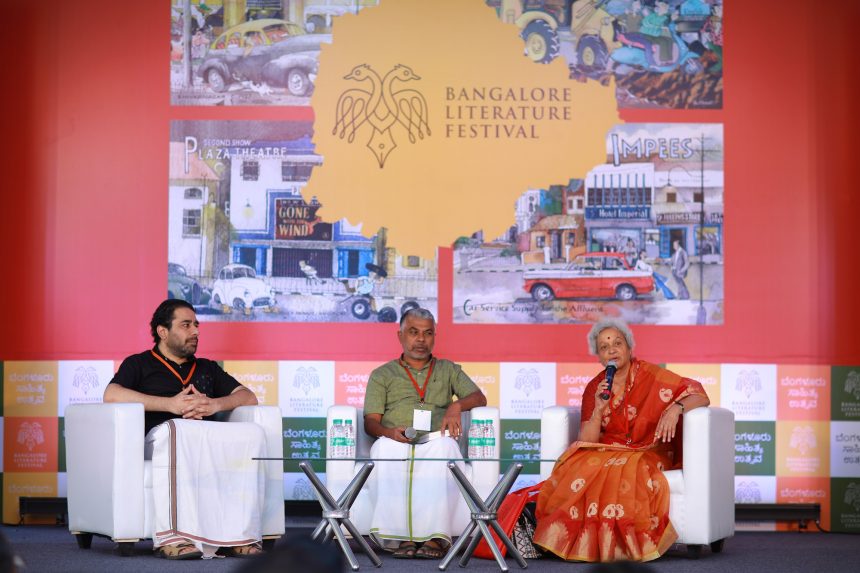The new arrivals section in most bookstores these days are overflowing with mythological fiction, making me want to run at the mention of fiction. The social media has barely recovered from the hailstorm of Padmavati (or should I say Padmavat?). So, I wasn’t sure if it was a safe idea to start reading a historical fiction at this juncture.
I looked at the title of the book again. It said Yoddha. I couldn’t help being reminded of Jodha (Akbar), who was a forerunner for the likes of Padmavati in terms of controversies. The subtitle of the book read, “The Dynasty of Samudragupta”. The author Rajat Pillai must have thought, “Why should the Khiljis, Akbars, and Aurangzebs have all the fun? Let us also wake the Guptas up, from their forgotten graves”.
A friend who saw me reading the book, asked if the book speaks of the wars that Samudragupta had won during his time. Given that the title of the book refers to ‘a warrior’, one would expect the same. However, you get to see more of Samudra, the retiring king and doting father and less of Samudra, the warrior. The story starts after the point in history when the Ashwamedha horse sent by Samudragupta returned unconquered, invariably crowning him the King of Kings. The book begins with Samudra and ends with him but there are many a Yoddhas in the pages in between. While Samudra remains the glorious historical backdrop for the story to unfold, the book is more about the ascending of Chandragupta II. The book does deal with battles but most of them doesn’t involve a sword or an armor.
The challenge with historical fictions is that the readers always know who lives and who dies. The success of such books lies in the narration that keeps the reader hooked to the book even after knowing what is to befall their favourite characters. That way Rajat Pillai chose a rather unconventional plot to keep his audience’s attention. Who would have thought that the future king of the Gupta Dynasty had to be treated for mental illness? On the hindsight, I am wondering if the author tried to create awareness about mental illness through his book. The book has all the usual elements of a historical fiction – war, love, sibling rivalry, treachery and more. An important chapter of the book almost reminded me of a scene from the blockbuster movie ‘Bahubali’, but the later chapters made me realize that there was more to it than what I had assumed.
The chapters dedicated to the amorous adventures of Chandragupta are akin to a Bollywood dance number in the middle of a fast-moving thriller movie. It disrupts the flow of the story, but being an Indian audience, you are used to such fully-packed entertainers. So that way, the book caters to classes and surely is an entertainer. An interesting part of the book was the inclusion of the intriguing Kumari Devi (Kanya Devi) or the Living Goddess in the plot and touching upon the significant role these women play in a kingdom. When you have almost forgotten about Samrat Samudra after the first few chapters, there come the dark secrets from his past weaving some exciting subplots before the grand finale. From Vyom to Madhavasena, the book is quite engaging. However, I do personally think the editorial team could have done a better job.
I come from the creed of people who still can’t get over the Kalki Krishnamurthy’s Ponniyin Selvan (1950) after all these years. 2400 pages and five volumes, one can imagine the amount of research and historical data that would have gone into the making of a book of such magnitude.
With Ponniyin Selvan as the benchmark, it becomes difficult to appreciate any new age historical fiction. However, I am also aware that it is unfair to the author to put his book against the mighty Ponniyin Selvan. So, I must warn you that if you belong in the Ponniyin Selvan fan club, then this book might leave you unquenched. But, if you are a light reader and are tired of the mythological fictions or if you are looking for a page turner, then this is an excellent choice of read for you. I must also credit the author for choosing the Golden era in the Indian history that usually gets overshadowed thanks to all the political controversies. Even if the book doesn’t bring out all the true history of this period, I hope the book will rekindle the interest of the reading population to unearth more knowledge about these rulers and their administration.











